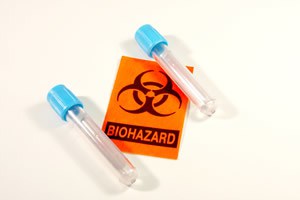6 Facts Patients Should Know about Biohazard Waste Containers
 Those mysterious plastic containers inside almost all medical facility rooms are actually biohazard waste containers. Even the most mundane item, such as a bandage, has biohazardous residues across the material. To prevent disease spread, specialized containers are used to hold and dispose of all soiled items. Patients should understand a few key concepts about these containers to know when they’re being used correctly.
Those mysterious plastic containers inside almost all medical facility rooms are actually biohazard waste containers. Even the most mundane item, such as a bandage, has biohazardous residues across the material. To prevent disease spread, specialized containers are used to hold and dispose of all soiled items. Patients should understand a few key concepts about these containers to know when they’re being used correctly.
Shape Indicates Use
Biohazard waste containers come in dozens of different shapes, from holding large liquid volumes to supporting needle disposal. All containers are plastic, but they can be cylindrical, rectangular or square. They’re always clearly marked for medical waste pickup, so patients aren’t at risk to accidentally opening up the container.
Must Be Lined
From the outside, biohazard waste containers appear to be plastic throughout, but the interior is covered with specialized liners. These liners allow for safe medical waste pickup each time. Without liners, there’s an increased chance of injury from sharp items, including needles.
Always Covered and Latched
The main purpose of waste containers is safety for healthcare workers and patients. There should be no unauthorized access into the boxes, for example. An open or unlocked lid means anyone can open the container; medical personnel must be notified immediately of any open boxes. Although containers are normally placed out of children’s reach, there’s still an injury risk with lidless boxes remaining open.
Specialized Clothing for Access to Biohazard Waste Containers
If patients ever see a medical professional accessing waste containers, they should be wearing appropriate clothing. At the minimum, gloves should be worn to prevent spills onto skin. Although all discarded items should be secured, there’s always a chance of the contents accidentally touching a person during official disposal or removal.
Maximum One Week Hold
Patients should never see an overflowing waste container. In fact, the maximum hold time for most containers is one week or seven days. Report any violations to the medical facility. That container may have been overlooked.
Liquids Disinfected
Bodily fluids, such as blood, always need to be disinfected for proper disposal. These fluids and tissues must run through a processing procedure before being safe to dispose of permanently.
Medical waste pickup should always be frequent. If patients notice a neglected container, bring up this fact with facility personnel. That container may need to be relocated for better disposal practices. Patients and caregivers are safer when biohazardous waste is disposed of properly.








